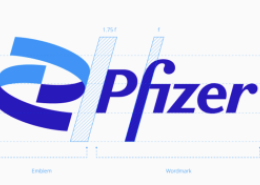Pfizer Announces FDA Acceptance For Review Of Application To Expand Labeling For XELJANZ® (tofacitinib citrate) For Adults With Moderately To Severely Active Rheumatoid Arthritis To Include Inhibition Of Progression Of Structural Damage
NEW YORK, N.Y., June 21 - Pfizer Inc. (NYSE: PFE) announced today that the U.S. Food and Drug Administration (FDA) has accepted for review a supplemental New Drug Application (sNDA)for the XELJANZ® (tofacitinib citrate) rheumatoid arthritis (RA) indication seeking expansion of the label to include inhibition of progression of structural damage. The FDA will review the sNDA and is expected to provide a decision by February 2014, based on the anticipated Prescription Drug User Fee Act (PDUFA) action date for the sNDA.
XELJANZ 5 mg twice daily (BID) was approved by the FDA in November 2012 for the treatment of adults with moderately to severely active RA who have had an inadequate response or intolerance to methotrexate (MTX), and is the first approved RA treatment in a new class of medicines known as Janus kinase (JAK) inhibitors. In the United States, XELJANZ may be used as monotherapy or in combination with MTX or other non-biologic disease-modifying antirheumatic drugs (DMARDs). XELJANZ should not be used in combination with biologic DMARDs or potent immunosuppressants, such as azathioprine and cyclosporine.
The sNDA is supported by the results of ORAL Start (A3921069), a 24-month Phase 3 randomized, double-blind, controlled trial in MTX-naïve patients with moderately to severely active RA who were randomized to receive XELJANZ 5 or 10 mg BID or MTX. A pre-planned interim 12-month analysis showed that XELJANZ 5 and 10 mg BID as monotherapy were superior to MTX, with statistically significantly greater inhibition of structural damage, as measured by mean change from baseline in the van der Heijde modified Total Sharp Score (mTSS), and statistically significantly greater improvement in signs and symptoms of RA, as measured by ACR70 response rates. Both primary endpoints assessed XELJANZ versus MTX at six months. No new safety signals emerged in the ORAL Start study, and the safety profile of XELJANZ was consistent with that seen previously in the clinical development program.
ORAL Start data were first presented at the American College of Rheumatology Annual Meeting in November 2012. The results of ORAL Start were not included in the New Drug Application to the FDA for XELJANZ as the study was ongoing at the time of the original regulatory submission.
About XELJANZ
XELJANZ is a prescription medicine called a Janus kinase (JAK) inhibitor. XELJANZ is used to treat adults with moderately to severely active rheumatoid arthritis in which methotrexate did not work well.
· It is not known if XELJANZ is safe and effective in people with Hepatitis B or C.
· XELJANZ is not for people with severe liver problems.
· It is not known if XELJANZ is safe and effective in children.
Important Safety Information
· XELJANZ can lower the ability of the immune system to fight infections. Some people have serious infections while taking XELJANZ, including tuberculosis (TB), and infections caused by bacteria, fungi, or viruses that can spread throughout the body. Some people have died from these infections. Healthcare providers should test patients for TB before starting XELJANZ, and monitor them closely for signs and symptoms of TB and other infections during treatment. People should not start taking XELJANZ if they have any kind of infection unless their healthcare provider tells them it is okay.
· XELJANZ may increase the risk of certain cancers by changing the way the immune system works. Lymphoma and other cancer can happen in patients taking XELJANZ.
· Some people taking XELJANZ get tears in their stomach or intestines. Patients should tell their healthcare provider right away if they have fever and stomach-area pain that does not go away, or a change in bowel habits.
· XELJANZ can cause changes in certain lab test results including low blood cell counts, increases in certain liver tests, and increases in cholesterol levels. Healthcare providers should do blood tests before starting patients on XELJANZ and while they are taking XELJANZ, to check for these side effects. Normal cholesterol levels are important to good heart health. Healthcare providers may stop XELJANZ treatment because of changes in blood cell counts or liver test results.
· Patients should tell their healthcare providers if they plan to become pregnant or are pregnant.
It is not known if XELJANZ will harm an unborn baby. To monitor the outcomes of pregnant women exposed to XELJANZ, a registry has been established. Physicians are encouraged to register patients and pregnant women are encouraged to register themselves by calling 1-877-311-8972.
· Patients should tell their healthcare providers if they plan to breastfeed or are breastfeeding. Patients and their healthcare provider should decide if they will take XELJANZ or breastfeed. They should not do both.
· In carriers of the hepatitis B or C virus (viruses that affect the liver), the virus may become active while using XELJANZ. Healthcare providers may do blood tests for hepatitis before and during treatment with XELJANZ.
· Common side effects include upper respiratory tract infections (common cold, sinus infections), headache, diarrhea, and nasal congestion, sore throat, and runny nose (nasopharyngitis).
About Rheumatoid Arthritis
Rheumatoid arthritis (RA) is a chronic, systemic autoimmune disease that can be painful and disabling.1 RA causes a range of symptoms, including stiffness and swelling in the joints,2 particularly those in the hands, feet and knees.1 Although the exact cause of RA is unknown,1 it is considered to be an autoimmune disease, because the immune system in people with RA mistakes the body’s healthy tissues for a threat and attacks them.1 Some people are at increased risk of developing RA, including people with a family history of RA, smokers and women.3 Three times as many women are affected by RA compared to men.2 RA affects approximately 23.7 million people4 worldwide and 1.6 million people in the United States.5,6 It can develop at any time during adulthood, but it usually occurs between 40 and 70 years of age.2
Pfizer Inc.: Working together for a healthier world®
At Pfizer, we apply science and our global resources to bring therapies to people that extend and significantly improve their lives. We strive to set the standard for quality, safety and value in the discovery, development and manufacture of health care products. Our global portfolio includes medicines and vaccines as well as many of the world's best-known consumer health care products. Every day, Pfizer colleagues work across developed and emerging markets to advance wellness, prevention, treatments and cures that challenge the most feared diseases of our time. Consistent with our responsibility as one of the world's premier innovative biopharmaceutical companies, we collaborate with health care providers, governments and local communities to support and expand access to reliable, affordable health care around the world. For more than 150 years, Pfizer has worked to make a difference for all who rely on us. To learn more, please visit us at www.pfizer.com.
DISCLOSURE NOTICE: The information contained in this release is as of June 21, 2013. Pfizer assumes no obligation to update forward-looking statements contained in this release as the result of new information or future events or developments.
This release contains forward-looking information about XELJANZ (tofacitinib citrate), including its potential benefits, that involves substantial risks and uncertainties. Such risks and uncertainties include, among other things, uncertainties related to whether and when the FDA will approve the sNDA to expand the labeling for the XELJANZ rheumatoid arthritis indication to include inhibition of progression of structural damage; and competitive developments.
A further description of risks and uncertainties can be found in Pfizer’s Annual Report on Form 10-K/A for the fiscal year ended December 31, 2012, and in its reports on Form 10-Q and Form 8-K.
# # # # #
References:
1 Medline Plus, “Rheumatoid Arthritis” Accessed 11 October 2011. Available at
http://www.nlm.nih.gov/medlineplus/ency/article/000431.htm.
2 Lee DM, Weinblatt ME. Rheumatoid arthritis. Lancet. 2001; 358:903-911.
3 Mayo Clinic, “Rheumatoid Arthritis.” Accessed 14 September 2011. Available at
http://www.mayoclinic.com/health/rheumatoid-arthritis/DS00020/DSECTION=risk-factors.
4 World Health Organization, “The Global Burden of Disease, 2004 Update.” Accessed 13 March 2012. Available at
http://www.who.int/healthinfo/global_burden_disease/GBD_report_2004update_full.pdf.
5 Sacks, J., Lou, Y., Helmick, C. Prevalence of Specific Types of Arthritis and Other Rheumatic Conditions in the
Ambulatory Health Care System in the United States 2001-2005. Arthritis Care and Research. 2010. 62(4): 460- 464.
6 Howden, L., Meyer, J., 2010 U.S. Census Bureau results --- U.S. Census Bureau, 2010 Census Summary File 1.
Media Contact: Victoria Davis
O: 484-865-5194
Investor Contact: Suzanne Harnett
O: 212-733-8009







